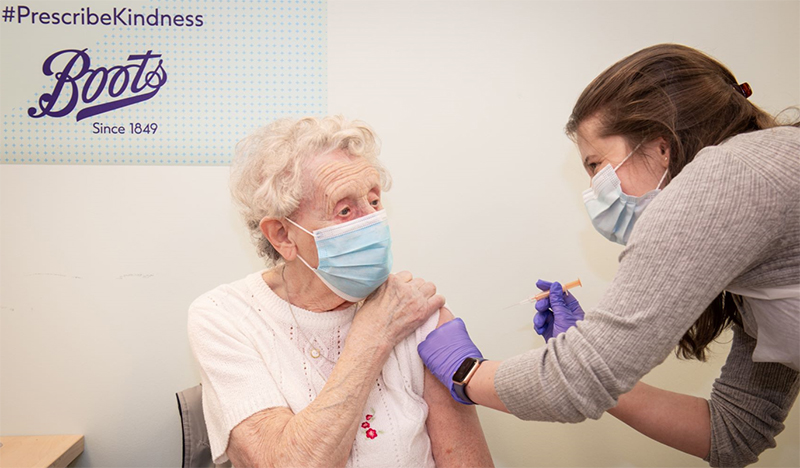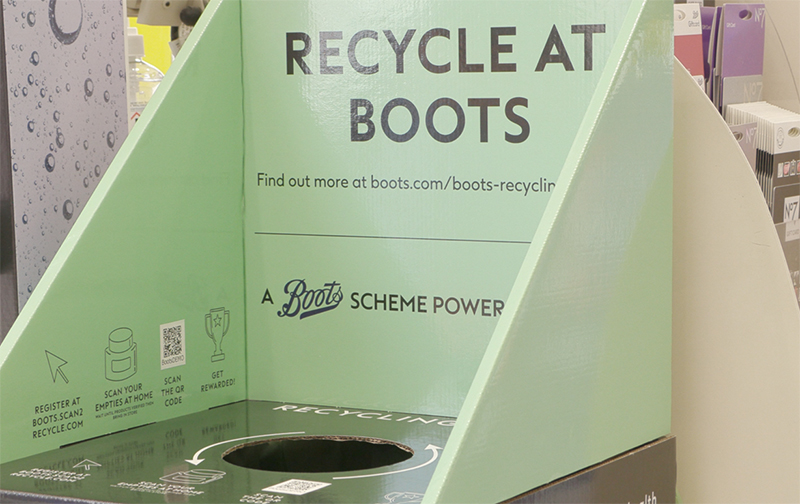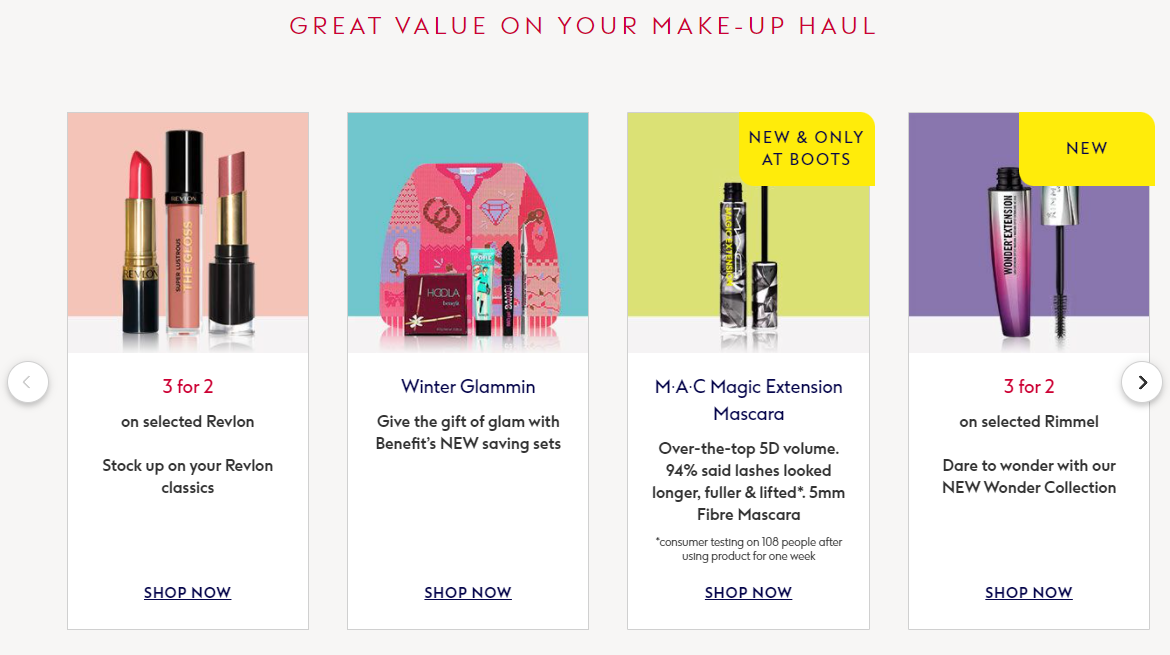Pete Markey, Chief Marketing Officer at British health and beauty retailer Boots, speaks to WARC’s Anna Hamill for Marketer’s Toolkit 2022 about integrating physical and digital retail, sustainability as a core value, and new approaches to measurement.
Toolkit 2022
This interview is part of WARC's Marketer's Toolkit 2022. Read more.
Key insights:
- Boots has invested in strengthening its digital presence to be there when people need it the most, while using physical stores to provide an additional level of customer experience.
- Sustainability is a major consideration: 99% of waste at Boots is now diverted from landfill and just under 98% of stores are powered by renewable energy.
- Tools such as econometrics and multi-touch attribution are really important for measuring marketing activity at Boots, as well as Google Analytics, search trends, email performance, media activity, etc.
How has Boots responded to the challenge of COVID-19 over the last 18 months?
One of the things we’ve worked to do is be there when people need us the most. Our stores have been largely open throughout because we've been an essential service and supporting the NHS as well. We've been involved with COVID testing and most recently with the ongoing vaccination programme.

Source: Boots
Physical stores have remained really important for us because it's a destination for people to come in and get advice on their health and wellbeing. That is supported by what we’re doing in a digital environment as well.
More people are starting to return to our shops and want to have an experience where they can interact with our staff – whether it's with team members in-store, whether it's beauty advice, or whether it's to talk to a pharmacist or come in for a flu vaccination. Our stores have been very much essential to that in the lives of customers.

Pete Markey, Chief Marketing Officer, Boots
What lessons from COVID-19 do you see as major opportunities for your business moving forward?
Boots has seen huge benefits from having a strong digital presence: being there and available when people need us the most and by having a strong ‘click and collect’ offering and delivery options so we can get products to people at the right time. We recently launched a pilot partnership with Deliveroo to deliver goods in an even faster time, and it’s been a very strong trial so far.

Source: Boots
Digital provides a great gateway into everything Boots has to offer and our physical presence is a gateway into the brilliance of our team members in-store and everything they can provide and do. The big lesson, I think, has been around strengthening our digital presence: investing behind that to be there when people need it the most, and also using the physical presence to provide the extra depth of interaction and a level of customer experience that I think only an in-store [environment] can really offer in terms of expertise.
Which marketing trends do you see as having staying power from this time?
The speed and agility of getting things done and doing things that we never thought were possible will stay, and should stay. The brand being centred around customer experience is going to be more and more important. There's so many more things we could do in digital, making physical and other interactions a destination moment for why you’d want to engage with a brand.
Understanding what our customers want and need – whether it's been through COVID or moving forwards – and deepening those relationships is going to become increasingly important. Customers have a heightened sense of wellbeing and what a brand like Boots can do to support wellbeing is going to be an increasing theme.
Physical retail can be unfriendly toward the environment. How have you evolved toward a more sustainable approach?
Sustainability has been a really important part of what we do for quite a while now. We've been doing a ‘Recycle With Boots’ scheme where customers can recycle their empty health, beauty and wellness products. We're going to roll out that scheme to a further 650 stores across the UK, and we reward people by giving them Advantage card points [Boots’s loyalty scheme] for doing that.

Source: Boots
We changed all plastic carrier bags two years ago to 100% recycled brown paper bags. That's been a big move, and we've been using the sale of paper bags to fund our charity partnership. We're working towards being 100% plastic free on Boots.com deliveries by the end of 2021. About 99% of our waste is diverted from landfill – that was achieved by the end of last year –and just under 98% of our stores are powered by renewable energy.
Everything we do in our end-to-end customer experience has to be increasingly sustainable. It's the right thing to do but also customers expect it – from how we power stores, to the delivery experience, through to packaging. It’s part of what we are working on with supplier brands to Boots as well. Everywhere we show up, we're showing up in a way that's more sustainable than ever.
How are your efforts being incorporated into your marketing without ‘greenwashing’?
The real difference is when sustainability is part of your core messaging, and it’s just what you do as a brand. This is just what we do in Boots. It's how we show up, it's part of our values and part of our purpose. It’s all messaged in a way that underlines our commitment.
Our main thing has been to make sure it's real, authentic, and meaningful to customers. Then we’re underlying that through our communication as an ongoing drumbeat. It's about authenticity, which is so important to a brand like ours. We have to be authentic and we have to show up in ways that are real.
Boots is an iconic fixture of the British high street in terms of physical retail. What role does e-commerce play in your business?
E-commerce is hugely important. We’ve put a lot of investment behind our digital platform and the app. Through COVID to the start of this year, we saw over 100% year-on year growth in sales. We're still continuing to see really strong numbers from Boots.com.

Source: Boots.com
We have an optician’s practice, hearing care, beauty, pharmacy, and an online doctor service that does everything from hair loss to helping women through menopause. All these things are fundamental to us in e-commerce. It's another important gateway and way to get everything from Boots in the palm of your hand. We’ve also digitalized the Advantage card over the last 18 months or so.
E-commerce is a key channel and we're going to keep investing in it but obviously stores are really important to Boots as well. For us, it's around how we make e-commerce amazing, but also when you need us in-store then we can provide those services on the front line as well.
Have you made any changes to your media investment strategy with regards to the growing part of e-commerce within your business?
Yes, definitely. About 30% of the media we buy on average uses first party data now, which gives us a way to better build relationships with our audience and is a more effective way to reach the audiences we want to reach. That figure would have been [approximately] 7-8% a couple of years ago.
We found new ways to get better at how we use digital, but also in a way that's a lot more targeted and a lot more personal. The more we've been able to increase our learning on data and targeting, particularly in paid media, the more we've seen that engagement increase and the more we've seen customers respond positively to that.
Our email programme continues to be really effective. Things like our £10 Tuesdays and month-end deals are all highly effective. CRM programmes pull really well for us and we continue to optimise those. We're going for great connections with data and digital, and making things more and more personal in terms of how we show up.
How are you making sure that your brand experience is consistent across all of these new and emerging touchpoints?
It all comes back to our purpose, really, which is we've got a very clear sense of what we're about, who we are for, what we stand for, and our role in customer’s lives.
A consistent part of what we talk about now is that the overall connected spirit has to reflect our brand. What our customers expect, depending on the route that they come through, is not just great communications but great experiences as well. Arguably, the brand is the customer experience.
How are you balancing investment in brand building and performance marketing?
It's a fine line. I think we're balancing it pretty well. Looking at our summer 2021 campaign, we had a really good mix of traditional media plus also having strong digital and performance marketing alongside that.
We've got a really good appreciation within the business that we’ve got to prove the activity works. We still need to invest in the brand through a really good mix of media that includes TV, VOD, radio, digital out of home, and all the digital performance channels as well. We're constantly optimising what we do. All our data, from econometrics down, shows that investing in the brand remains key alongside fantastic performance marketing.
How are you evolving your thinking around how you do measurement? What’s your philosophy on marketing effectiveness these days?
It's really important to me and the team that we keep demonstrating our marketing is working. Tools like econometrics and multi-touch attribution are really important to help demonstrate how we're performing today, as well as more basic things like Google Analytics, search trends, email performance, media activity, direct mail response rates... all things that are still really important.
Things like multi-touch attribution are increasingly important to us now, as well as some of the Adobe capability we've got. It's really helpful to help us understand – as close to real time – what's working and what's not in our performance activity. I think there's always more to go after. Have I got the perfect mix of all the data points I want right now? No. But have I got enough where we can really plan, evolve and optimise what we need to do? 100% yes.
My hope is to get to a point where we can start to automate more of our marketing and optimise search and email to make it even more effective based on algorithms of what's working in that moment. That's where I hope we get to next.

